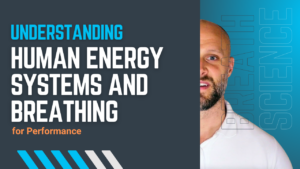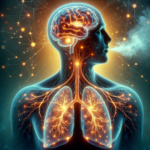Five Signs and Symptoms of Obstructive Sleep Apnea

Five Signs and Symptoms of Obstructive Sleep Apnea
Joseph Cossman, Entrepreneur and Author once said.
“The best bridge between despair and hope is a good night’s sleep.”
And he is not wrong; getting a poor night sleep often leaves us unable to focus, underperforming and getting frustrated more easily.
Over the past six weeks, I have been sleeping poorly due to someone jumping into the garden at midnight and scoping out the place for which I can only assume to burgle. Some nights I sleep ok, but others, I hear a noise, and it wakes me up. I’ve even started to see people walking in the house when there is no one around. Sounds crazy, but the mind plays games when you’re expecting someone to break into your home. Just this week, they tried again. But this time, I was wide awake to witness them trying to get into my garden, now back to my point.
There was one particular night last week where I had a terrible sleep. The following day everything seemed to go wrong. The meeting I attended with my business coach led to criticism, which I did not take very well, and I felt it upset me more than usual. I locked myself out of the house when taking the dog for a walk and felt as if I achieved almost no productivity on the daily tasks I wanted to complete. I could only see the negative despite there being positives throughout the day.
Can you imagine what it would be like to feel that way almost every day?
Well, that’s what life would be like with living with a sleep condition.
Those who suffer from Obstructive Sleep Apnea (OSA) tend to wake up feeling unrefreshed, lack motivation and have poor eating habits due to hormonal and neurological changes in the body. As a result, further weight gain is inevitable unless action is taken or the person has extreme willpower, which is often not the case. Not only this, but the condition also leads to a negative mindset, with functional MRI images suggesting heightened activity from the fear centres of the brain.
According to research, between 25-30% of males over 45 years have OSA, with roughly 10% of females suffering of similar age. However, it’s a condition that is underdiagnosed and growing along with obesity and our waistlines. Many people with OSA don’t always know they have it because their snoring leads to having no bed partner. Some are tired enough to not have to worry about insomnia and therefore fall asleep quickly and rarely remember waking up frequently due to being such short-lived moments in the night.
To help people recognise if they or a family member have OSA, I have compiled a list of five common signs and symptoms of sleep apnea. If you want to read the shortened version of this blog, you can find the information on my social media account www.instagram.com/performancethroughhealth
Snoring
OSA is characterised by a reduction of airflow into the lungs due to relaxing or closed airways. As the airway relaxes, the airflow at the back of the throat becomes turbulence and causes the airway to flutters. This vibration creates a noise coming from the nose that we recognise as snoring. However, not everyone who snores has OSA and not everyone who has OSA snores. That said, it is the easiest and most common sign of someone who has a breathing issue during sleep. In fact, we can use the sound from snoring to distinguish whether someone has OSA. I was involved in some clinical research using learning technology built to listen to the sound of a person’s snore and to provide feedback on their risk and severity of OSA.
SleepCheck is an app that only requires a smartphone placed on the bedside table to assess a person’s risk of OSA. In a 238-patient clinical study, Sleepchecks algorithms correctly identified patients with OSA with sensitivities of 85% (mild OSA), 83% (moderate OSA) and 83% (severe OSA), and specificities of 73%, 80% and 90% when compared to a Type II sleep study (complete, but unattended polysomnography) performed simultaneously in the patient’s home.
Suppose you or a family member snore and suffer from one of the following signs or symptoms. In that case, it may be worth downloading the app, which is available on both apple and android, giving you an indication of whether you need to reach out for further help.
Daytime Sleepiness
Sometimes, people with sleep apnoea often wake up feeling unrefreshed, with tiredness during the day and end up relying on caffeine to keep them awake. It’s all down to poor sleep quality. I said ‘sometimes’ because I have seen many clients who have OSA and deny feeling tired. That said, once treated, they usually reflect back and realise that life isn’t meant to feel so demanding and challenging. When you get a good night sleep, you can feel vitalised even past the age of 45.
Some personalities, however, do not notice any sleepiness, nor do they get any improvements in their daytime fatigue once treated. These people usually type A individuals, are always on the go and have a busy schedule. They don’t feel tired, but they don’t have time to feel at all. They are so motivated by external goals that they become so out of tune with their body they fail to realise there’s an issue. These are often executives, businessman, and extreme athletes who, due to their lack of body attention, end up with sleep apnoea, burnout or worse, suffering an unexpected heart attack.
With clients, we can measure daytime sleepiness using the Epworth sleepiness scale, which asks questions about the chance of dozing off or falling asleep during typical daytime activities such as sitting and reading, in meetings, or lying down in the afternoon. Scoring above 8 on the ESS may suggest excessive daytime sleepiness and is a good indicator of whether your energy levels are inadequate despite age, gender and fitness level. You can find a link to the ESS questions here.
Gasping & Choking
Whilst awake, air flows through the nose or mouth into the lung with limited resistance due to the airway being open. However, when one falls asleep, the airway relaxes. In those with OSA, the extent to which this causes narrowing is significant enough to affect airflow to the lungs. As a consequence, oxygen levels begin to fall. The nervous system detects a change in oxygen levels and a stress response occurs. Adrenalin is pumped through the body because our innate suffocation alert system is activated. The person wakes up gasping for air with a racing heart, causing a feeling of panic.
How low the oxygen level drops depends on how responsive one nervous system is, which comes down to overall health and how stressful a person’s life is. Generally, more aged individuals are going to have a less sensitive nervous system. Therefore, we may see oxygen saturations drop to less than 60% when 92-96% would generally be considered healthy during sleep. On the other hand, those who are fit may only require a 3% fall in their oxygen until the stress response system kicks in. As a rule, the lower the oxygen levels drop, the more severe the consequences of OSA.
The gasping and choking may not present in such a way of heavy breathing. Therefore, consider any significant and random movements in bed such as jumping, leg movement or noises as signs of OSA, especially if there are brief moments of silence before snoring in-between.
Poor Concentration
In my ten years of diagnosing and treating people with OSA, I have seen various patients ranging from young girls with epilepsy to which treatment stopped all seizures to overweight truck drivers with diabetes and heart issues under the age of 50. People with severe OSA are often disturbed more than 30 times per hour during sleep. The worst case I have seen is someone who was having breathing-related disturbances 155 times per hour. These are the types of individuals struggling to stay awake in the consult whilst you’re explaining the test results to them. Due to poor sleep quality, people with moderate and severe OSA often have trouble concentrating, memory problems, and poor decision-making skills.
Poor sleep, in general, has been linked to Alzheimer’s issues in later life. Throughout the day, the brain accumulates toxins from the breakdown and use of energy. It’s during deep sleep that these toxins are cleaned out. However, when someone has OSA, the amount of deep sleep one gets is significantly reduced. That means over time, these toxins build, and the connections in the brain do not work as well as they should, leading to a decline in cognitive performance. Sleep issues can cause the same thing in children, resulting in a misdiagnosis of Attention deficit disorder. They may end up on medications with many side effects that could be avoided if only their sleep behaviours were modified. Not only that, but the blood flow to the prefrontal cortex is also reduced. The cortex is a part of our brain required for executive functioning such as critical thinking, memory recall and problem-solving. Essentially chronic poor sleep from conditions such as OSA leads to the use of the monkey brain. Meaning a person finds it hard not to act out of instinct rather than rationality. This brings me to the fifth sign or symptoms to watch out for.
Emotional Turbulence
In life, we either create space to choose our responses or react out of emotionality. Awareness of emotions is the key to operating in a manner that gets you the outcomes you truly want. No one wants to be the person who gets pissed off and says or does things that they later regret, but it’s not all just down to the heat of the moment; it’s also about conscious control of the feelings that arise. The amygdala is the primitive part of our brain that is the fear centre. Humans have developed the cortex to manage the amygdala, which has allowed us to become more social and look at the world in a manner of resourcefulness rather than through the lens of innate necessity. Poor sleep quality resulting from OSA leads to a severing of the link between the cortex and the amygdala. Therefore top-down control of stress becomes more challenging. This is why people tend to be grumpy, seek out pleasure and make poor decisions after a bad night sleep.
On the other hand, depression shares many of the same symptoms, including restless sleep, fatigue, difficulty with focus, persistent feelings of frustration and helplessness, anxiety and weight gain. There is a strong link between poor sleep and mental health issues, whether due to chemical imbalances, poor performance and self-criticism or a lack of social life due to feeling tired. All of the mentioned are essential for health and wellbeing.
This poses a challenge for GP’s who may rule out OSA in those who are not typical to fit the perceived criteria. However, as mentioned in my previous blog on OSA in non-obese patients, that stereotype needs to be dismissed, and it’s such characterisations that may lead to a wrong diagnosis and incorrect treatment pathways.
Talking of emotions, back to my story from earlier on. It’s hard to override the stress response when someone attempts to break into your home. A few nights ago, they tried it again, only this time I just happened to be watching out of the same window that the fence they were attempting to jump over overviews. I immediately jumped out of my bed, into my housemate room to get a weapon and ran outside around the corner with a heavy-duty, metal fold-out baton.
Picture this, a 100kg bald-headed man who has just finished training for a powerlifting competition comes running around the house screaming.
“GET HERE NOW”
As I stood on the open side of the alleyway smashing my baton hard against the tree shouting at the trespassers. I quickly realised that two young boys were almost in tears of fear as I told them to come and stand in front of me.
I told them to come and stand in front of me as I raised the baton to the young boy’s jaw and asked him if he was trying to break into my house. They said:
“We are going for a walk.”
Completely confused, I asked if they were down there a few weeks ago, to which they said they were, and I went on to ask whether I looked like the sort of guy who you want to give nightmares?
Crying their eyes out, the neighbours come running outside to see what all the commotion was. As they turned to look at the two young boys, I soon realised that it was their son and his friend sneaking out of the house in the middle of the night to get out at the weekend and be young teenagers.
I quickly calmed as the parents anger immediately escalated. I was soon grateful that it wasn’t someone trying to steal all my valuable rather two young boys being rats and running amuck. Unfortunately, it didn’t go down well with his Dad because I heard him screaming for the next hour or so. The following morning they knocked on my door to apologise and asked what they could do to make up for it. Fortunately for me, and not so for them, I am due to move out soon, and the floors and house will need scrubbing, and there will be lots of boxes that need lifting. So, I will be sitting back with a cup of tea, giving out orders as they work their way back to good faith.
This night of poor sleep led to me writing this blog post about signs and symptoms of OSA, and I thought I’d share the story. Anyway, back to what you can do to help yourself or those around if they show OSA evidence with the issues mentioned earlier.
What should you do next?
These are some of the top signs and symptoms that I see in clinics. However, that’s not to say every person with OSA has them all. Everyone reacts differently because everyone has a diverse body, with other factors impacting their lives and varying levels of awareness. That said, if you or a family member show two or more signs of these symptoms, it may be worth getting a sleep study. The long-term implications of OSA are a severe health concern, and you’re better of getting treated early. In Australia, you must meet specific criteria to be eligible for a direct sleep study through Medicare. Reach out to me to book a sleep consult, and I can help get you a sleep study and advise on the best possible way to treat your sleep apnoea.
Thank you for taking the time to read; please leave any comments, questions or queries in the box below.
Kind Regards
Martin McPhilimey




